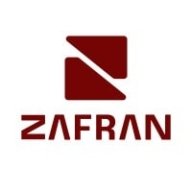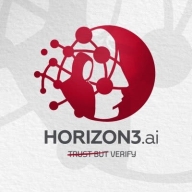


Microsoft Defender for Cloud and NodeZero Platform are competing in cybersecurity. Microsoft Defender for Cloud is preferable for its integration within Microsoft environments, while NodeZero Platform stands out due to advanced threat detection capabilities.
Features: Microsoft Defender for Cloud offers seamless integration with Microsoft products, automated threat mitigation, and comprehensive cloud security features. NodeZero Platform emphasizes proactive threat detection, real-time vulnerability assessments, and sophisticated risk prediction algorithms.
Ease of Deployment and Customer Service: Microsoft Defender for Cloud is easy to deploy within Microsoft environments, benefiting from extensive support networks. NodeZero Platform provides flexible deployment options with personalized service and hands-on support, impressing with tailored customer engagement.
Pricing and ROI: Microsoft Defender for Cloud provides competitive pricing with attractive ROI for Microsoft product users due to its integrated protection. NodeZero Platform, while potentially higher in initial cost, offers better long-term ROI for organizations focusing on advanced threat analytics. Microsoft Defender for Cloud is appealing for cost-effective integrations, whereas NodeZero Platform is ideal for maximizing threat detection capabilities and long-term value.
| Product | Market Share (%) |
|---|---|
| Microsoft Defender for Cloud | 5.1% |
| Zafran Security | 1.0% |
| The NodeZero Platform | 1.2% |
| Other | 92.7% |



| Company Size | Count |
|---|---|
| Small Business | 26 |
| Midsize Enterprise | 7 |
| Large Enterprise | 45 |
| Company Size | Count |
|---|---|
| Small Business | 5 |
| Midsize Enterprise | 1 |
| Large Enterprise | 4 |
Zafran Security integrates with existing security tools to identify and mitigate vulnerabilities effectively, proving that most critical vulnerabilities are not exploitable, optimizing threat management.
Zafran Security introduces an innovative operating model for managing security threats and vulnerabilities. By leveraging the threat exposure management platform, it pinpoints and prioritizes exploitable vulnerabilities, reducing risk through immediate remediation. This platform enhances your hybrid cloud security by normalizing vulnerability signals and integrating specific IT context data, such as CVE runtime presence and internet asset reachability, into its analysis. No longer reliant on patch windows, Zafran Security allows you to manage risks actively.
What are the key features of Zafran Security?
What benefits can users expect from Zafran Security?
In industries where security is paramount, such as finance and healthcare, Zafran Security provides invaluable protection by ensuring that only exploitable vulnerabilities are addressed. It allows entities to maintain robust security measures while allocating resources efficiently, fitting seamlessly into existing security strategies.
Microsoft Defender for Cloud is a comprehensive security solution that provides advanced threat protection for cloud workloads. It offers real-time visibility into the security posture of cloud environments, enabling organizations to quickly identify and respond to potential threats. With its advanced machine learning capabilities, Microsoft Defender for Cloud can detect and block sophisticated attacks, including zero-day exploits and fileless malware.
The solution also provides automated remediation capabilities, allowing security teams to quickly and easily respond to security incidents. With Microsoft Defender for Cloud, organizations can ensure the security and compliance of their cloud workloads, while reducing the burden on their security teams.
NodeZero by Horizon3.ai empowers organizations to view security from an attacker's perspective, enhancing vulnerability management and defense validation.
NodeZero is an offensive security platform designed to identify network vulnerabilities and validate defenses. It specializes in demonstrating how attackers exploit misconfigurations and exposures, offering proof-based insights to prioritize security measures. NodeZero automates large-scale penetration tests, integrates hybrid cloud coverage, and supports continuous threat exposure management, making it essential for risk-based vulnerability management.
What are NodeZero's key features?NodeZero's application spans industries like finance and healthcare, primarily for penetration testing, vulnerability assessment, and compliance. It acts as an extension or alternative to traditional systems, aiding rapid response and complementing tools like Rapid7 and CrowdStrike, enhancing comprehensive security views.
We monitor all Vulnerability Management reviews to prevent fraudulent reviews and keep review quality high. We do not post reviews by company employees or direct competitors. We validate each review for authenticity via cross-reference with LinkedIn, and personal follow-up with the reviewer when necessary.